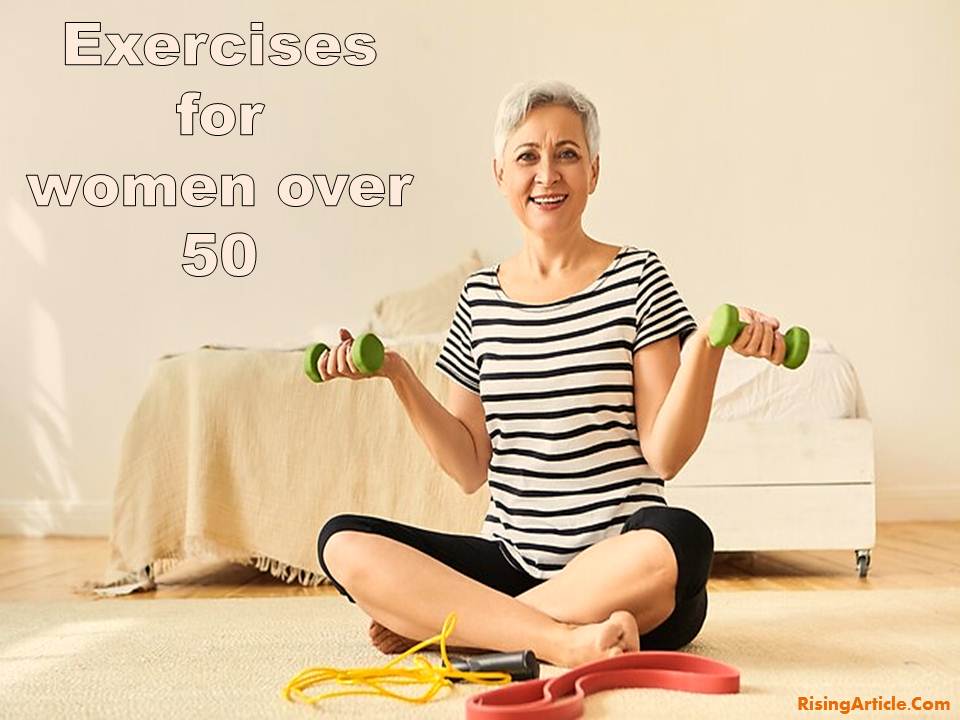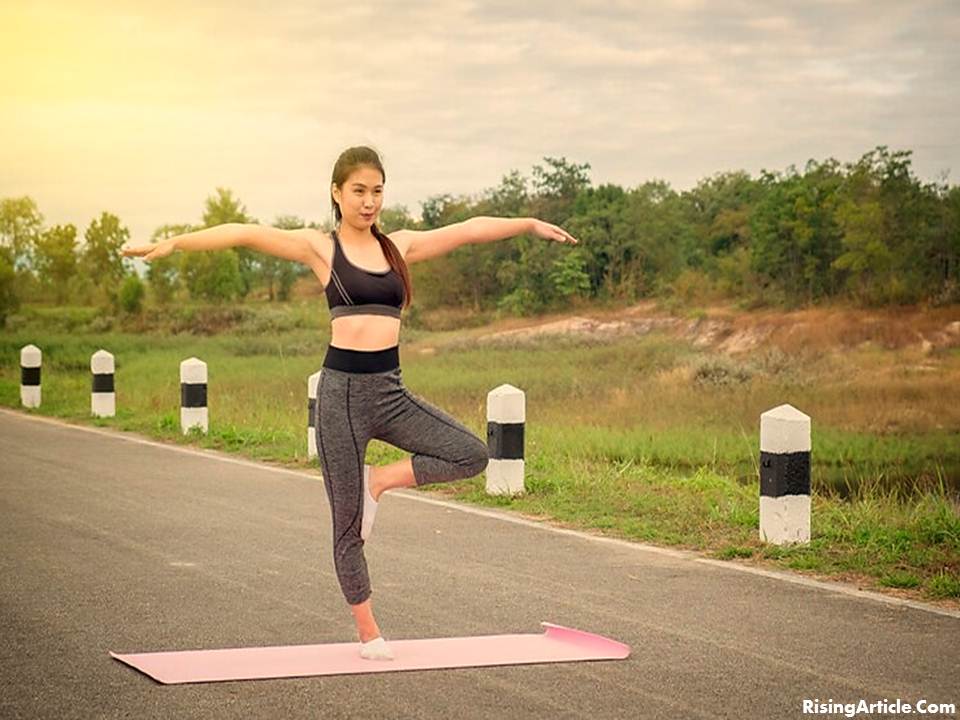Life is a journey with different chapters, and for women, a new chapter emphasizing the value of preserving health, vitality, and well-being begins as they approach and pass fifty years of age. The adoption of a regular exercise routine designed especially for women over 50 is a major theme in this chapter. These activities are carefully crafted to meet the special requirements, difficulties, and goals associated with aging.
We will look at a wide range of exercises for women over 50 in this article, “Exercises for women over 50,” including routines for cardiovascular fitness, strength training, flexibility, and balance. These activities offer a structure for appreciating the advantages of living an active and meaningful life, improving physical health, and cultivating an optimistic view of the future. Come along with us as we set out on this path to longevity, health, and vitality with exercises designed with the needs of women over 50 in mind.
Exercises for women over 50
 Women over 50 should exercise regularly to maintain their physical health, control their weight, increase their flexibility, and improve their general well-being. It is imperative to select exercises that are appropriate for your specific fitness level, objectives, and any pre-existing medical conditions.
Women over 50 should exercise regularly to maintain their physical health, control their weight, increase their flexibility, and improve their general well-being. It is imperative to select exercises that are appropriate for your specific fitness level, objectives, and any pre-existing medical conditions.
A healthcare professional should always be consulted before beginning a new fitness regimen, particularly if you have any underlying medical issues. For women over fifty, consider these exercise options:
Cardiovascular exercises
These exercises are intended to help you manage your weight and strengthen your heart and lungs. They consist of exercises like dancing, swimming, cycling, and brisk walking. Engaging in cardiovascular exercises raises your breathing and heart rate, both of which are crucial for maintaining cardiovascular health.
Strength training
For both metabolic health and functional independence, it is essential to develop and maintain muscle strength. There are several ways that women over 50 can perform strength training exercises:
Exercises like push-ups, planks, lunges, and squats that require your own body weight.
Elastic bands that strengthen your muscles and provide resistance to your movements.
Doing exercises like overhead presses and bicep curls with small weights.
These can offer more intense resistance training for those with experience.
Flexibility and balance exercises
Maintaining range of motion and avoiding injuries require these exercises. Choices consist of:
Yoga: An exercise regimen that enhances flexibility, balance, and relaxation through physical postures, breathing techniques, and meditation.
Pilates: Emphasizes balance, flexibility, and strength in the core.
Tai Chi: A traditional Chinese martial art that places a focus on fluid, slow motions to improve balance and lower the chance of falling.
Core exercises
Maintaining proper posture and avoiding back pain require strengthening your core muscles, which include your lower back and abdominals. Planks, leg lifts, and Russian twists are examples of core exercises.
Stretching
Maintaining or increasing flexibility and avoiding muscle stiffness require regular stretching. Your muscles must be stretched in order to widen their range of motion.
Group fitness classes
Participating in group fitness sessions can be social and motivating. To enjoy exercise in a supportive group setting, consider taking part in senior fitness classes, Zumba, or aerobics.
Always remember that it’s important to start out slowly, build up your workout intensity gradually, stay hydrated, and use the right warm-up and cool-down techniques. Additionally, it’s critical to tailor your workout regimen to your unique requirements and speak with a healthcare provider or fitness expert if you have any specific fitness objectives or underlying medical concerns. They can assist you in developing an exercise program that is safe and suitable for your particular situation.
Benefits of Exercises for women over 50
 Women in their 50s and beyond can benefit greatly from regular exercise in many different ways, including mental, emotional, and physical health. The following are some major benefits of doing workouts intended for women over 50:
Women in their 50s and beyond can benefit greatly from regular exercise in many different ways, including mental, emotional, and physical health. The following are some major benefits of doing workouts intended for women over 50:
Cardiovascular exercises lower the risk of high blood pressure, heart disease, and stroke and help maintain a healthy heart. Examples of these exercises include brisk walking, cycling, and swimming.
Exercises that increase muscle mass and preserve it can help prevent age-related muscle loss and preserve functional independence.
Stretching exercises, Pilates, and yoga improve range of motion and lower the risk of injury by increasing flexibility.
Tai Chi and other balancing exercises can increase general stability and lower the chance of falling.
Frequent exercise promotes joint health and improves joint mobility, which can help reduce joint pain, stiffness, and arthritis symptoms.
Endorphins, which are released when you exercise, have been shown to alleviate the symptoms of stress, anxiety, and depression as well as enhance general mood and mental health.
Frequent exercise improves physical fitness and body composition, which can increase self-esteem and body confidence.
Frequent exercise can aid in weight loss if necessary and help control and manage body weight, preventing weight gain.
Strength training and other weight-bearing activities can increase bone density and lower the risk of fractures and osteoporosis.
Exercise is a natural way to reduce stress and foster calmness by easing everyday tensions.
Frequent exercise has been linked to a longer, healthier life expectancy.
Exercise has been associated with improved cognitive function and a decreased risk of cognitive decline, which includes Alzheimer’s disease and dementia.
Exercise with friends or taking part in group fitness classes can promote social interactions and help fight feelings of isolation or loneliness.
Maintaining a healthy metabolism through regular exercise can help control weight and ward off the onset of metabolic diseases like type 2 diabetes.
Exercise can help reduce sleep disturbances and improve the quality of your sleep.
It’s crucial to remember that fitness regimens should be customized to each person’s goals, health issues, and degree of fitness. To design a safe and efficient exercise program that meets your unique needs and circumstances, always seek the advice of a healthcare provider or fitness specialist.
Conclusion:
Women over 50 can greatly benefit from exercise in terms of their health and wellbeing. For women in this age group, a well-rounded exercise program that incorporates cardiovascular workouts, strength training, flexibility exercises, and core work can yield numerous benefits, such as enhanced cardiovascular health, increased muscle strength, increased flexibility, and enhanced emotional well-being.
The need of remaining active grows with age, and it’s encouraging to know that a variety of skill levels and exercise inclinations can find their fit in the fitness world. The path to a more vibrant and healthy life is attainable, ranging from vigorous walks to yoga sessions.
To guarantee a safe and efficient exercise regimen, the secret is to start with a plan customized to your unique needs and speak with medical professionals or fitness specialists.
Remember that it’s never too late to start the journey toward improved health, and that exercise can accompany you on this journey for the rest of your life. Now, embrace the myriad advantages that exercise can offer to women over 50 by putting on your shoes, grabbing some dumbbells, and getting moving. You’ll be grateful to yourself in the future.
Frequently Asked Questions
What is the best exercise for a 50 year old woman?
The ideal workout for a fifty-year-old woman can change based on her objectives, degree of fitness, and medical issues. Cardiovascular exercises, such as brisk walking or cycling, are usually part of a well-rounded routine.
Strength training with little weights or bodyweight movements.
Exercises for balance and flexibility, like yoga or Pilates.
Planks and leg lifts are examples of core exercises.
Fitness classes in groups that promote social interaction and motivation.
Get advice from a fitness expert or healthcare provider to develop a customized plan that suits your requirements and tastes.
How much should a 50 year old woman exercise?
Aim for 150 minutes of moderate-intensity aerobic exercise or 75 minutes of vigorous-intensity exercise per week for a 50-year-old woman.
At least twice a week, engage in strength training for all major muscle groups.
Frequent exercises for balance and flexibility.
Core exercises can help prevent back pain and improve posture.
For a customized plan, speak with a medical professional or fitness specialist.
What exercises burn fat for women over 50?
Walking, cycling, swimming, or high-intensity interval training are examples of aerobic and strength training activities that are effective at burning fat for women over 50. Reliability is essential. Before beginning, speak with a physician or fitness professional. Pay more attention to overall fat loss than spot reduction.




